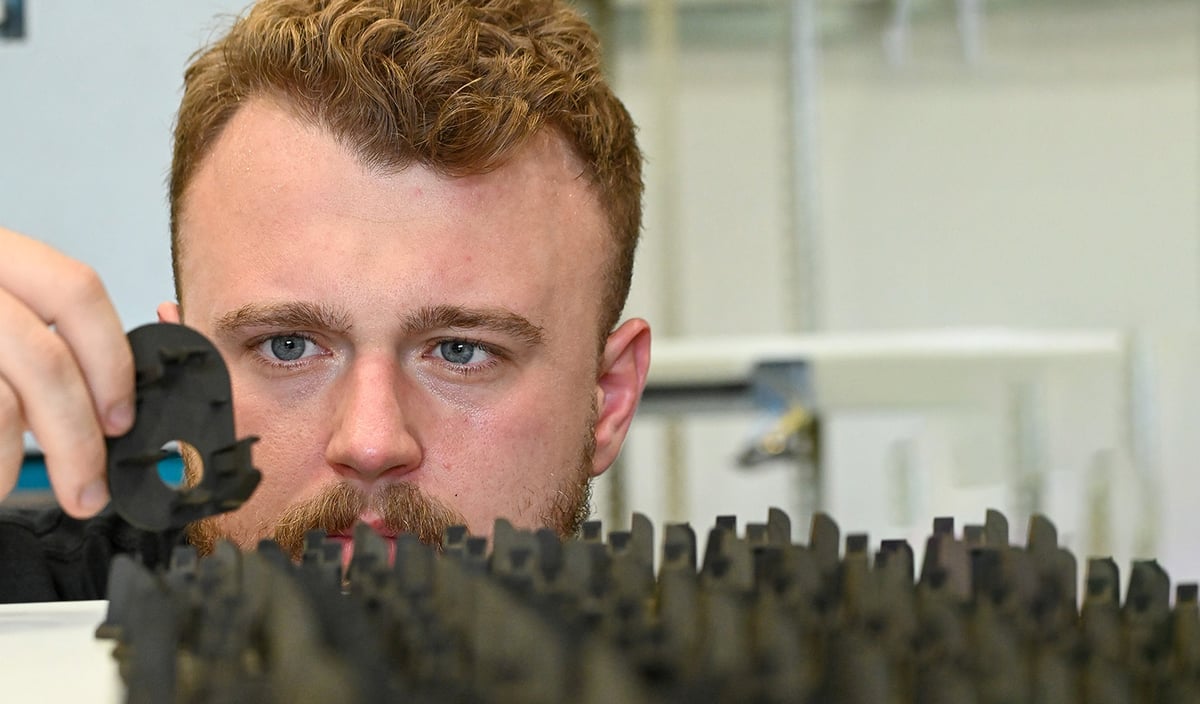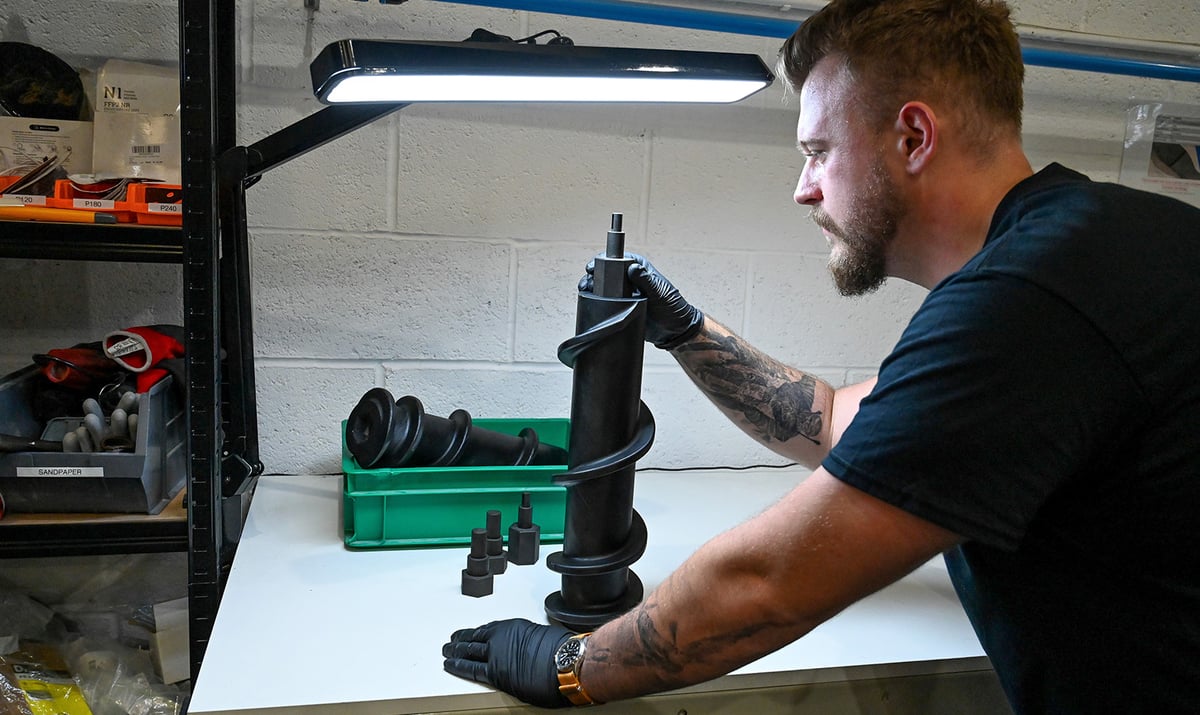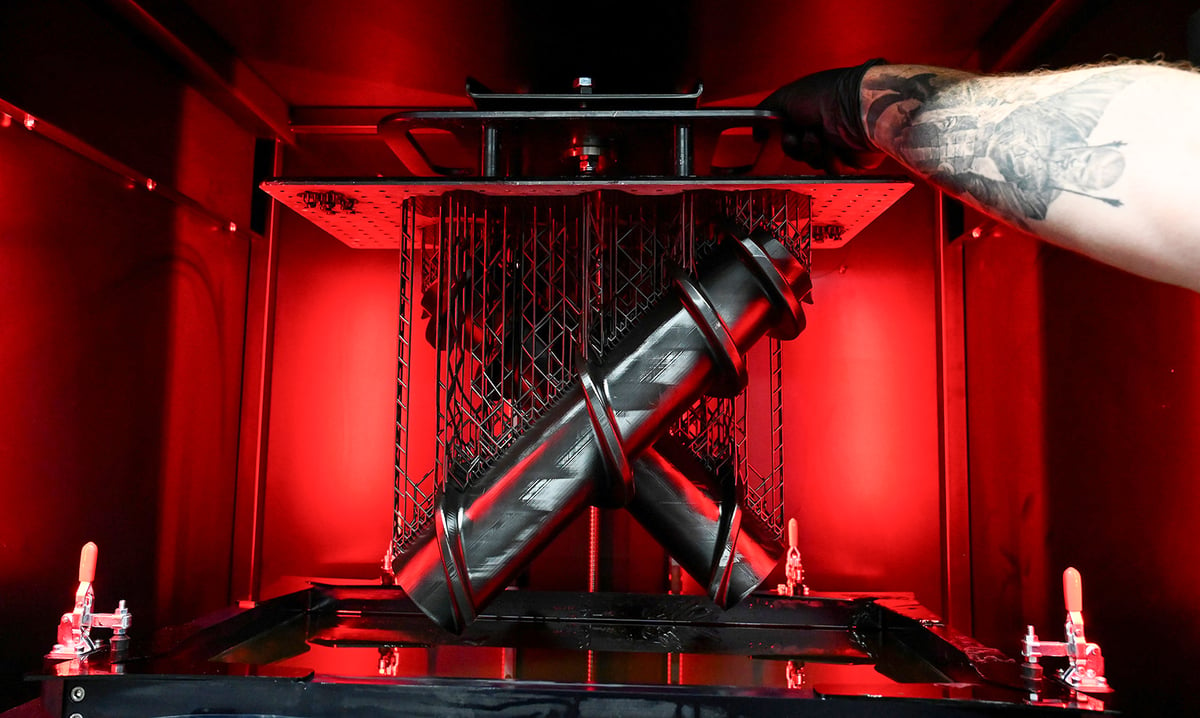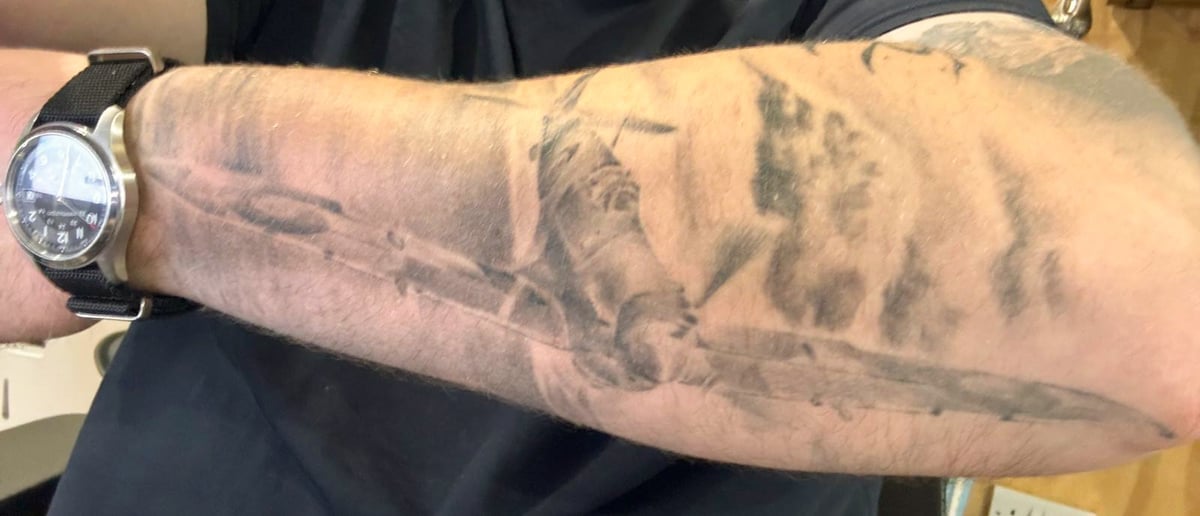Talking to All3DP about his business success while getting a tattoo one midafternoon in May is not only how Ryse 3D CEO Mitchell Barnes spent part of his 28th birthday, it’s also emblematic of how he runs his company: always on and all in.
Barnes founded Ryse 3D in 2017 after printing 3D models for fellow University students while studying automotive and transportation design at Coventry University in England. Fast forward to 2024, and this small manufacturing firm, which was just awarded the coveted King’s Award for Enterprise, expects to turn over 4.5 million pounds ($5.6 million) in revenue in 2024.
How do you take 3D printing entrepreneurship to these heights? Barnes says it’s passion, drive, and expertise.
Rather than offering 3D printing as a service and producing whatever customers bring, Ryse 3D has specialized from the start in automotive parts. Not just any automotive parts, but hypercar parts for the type of customer who understands automotive engineering.

Hypercars — think Hennessey or Czinger — are vehicles with high performance figures in terms of speed, braking, extremely lightweight, and capable of producing extremely high G cornering, says Barns. They’re also expensive, in the range of $1 to $2 million per car.
Although 3D printed automotive parts have made their way into racing sport cars in the past – Stratasys has 3D printed race-ready parts for McLaren MCL32 race car and another printer maker Roboze contributed parts to Monster Energy Yamaha MotoGP – hypercars are different.
“Motorsport cars are essentially like really cool prototype vehicles, because a lot of them don’t survive, in most cases, more than one race,” says Barnes. “Making vehicles that have to conform to production standards, while also performing on the road, have to hit some really stringent characteristics.”
Rather than the odd intake manifold, Ryse 3D prints about 700 to 800 components per vehicle, in every area of the vehicle, including in the engine bay and actual engine components, say Barnes.
One innovation Barnes brought to the table was 3D printed mold tooling for automotive parts. Partnering with a few UK-based automotive manufacturers, Ryse 3D developed its own material that would enable durable molds for polymer injection molding, blow molding, and vacuum forming, saving these companies from having to order molds from China.

Regulations in the auto industry allow for any type of mold tooling to be used as long as the final part meets the required specifications, says Barnes. This isn’t the case in most other large manufacturing spaces, and it gave Ryse 3D a way to compete with established tooling manufacturers.
Couple the 3D printed mold tooling with direct 3D printing automotive parts, and Ryse 3D becomes a one-stop-shop for hypercar manufacturers. “We take all of the problems and the management of managing 800 parts off of the car maker and deliver that as a cohesive solution,” says Barnes.
It’s Barnes’ automotive design expertise that enables his company to be more of a manufacturing partner for these car companies, rather than a part supplier.

“They’ll tell us what the component needs to do or the problem of a specific area, and we’ll actually do full design engineering of the entire component, or assembly, or area of the vehicle for the customer, and then deliver that entire solution for them,” he says.
If you’re looking for a hypercar on the road, it won’t be easy to spot considering that only a few thousand were produced in 2022, according to Transparency Market Research. That number should grow to about 6,000 by 2031, which at $1 million per car is a high-value market niche for Ryse 3D. Forecasts put the hypercar market value at $26 billion in 2024, expected to rise to about $70 billion by 2028.
Ryse 3D won’t release the names of any of the 18 hypercar companies it works with, but industry leaders are Lamborghini, Koenigsegg, Porsche, Zenvo Automotive, and Bugatti.
Barnes says his company’s turnover in 2023 was 2.1 million pounds, about $2.6 million. “This year, we’re expecting to do between four to five million and we’re sitting at around about 11 million pounds of contracted work orders.”
The orders should total more than a million parts this year, Barnes says, which is an impressive figure for a company with only 14 employees.
To get this type of volume required extraordinary automation, which Barnes did not find on any commercially available 3D printer. So he built his own.
“Rather than being limited by using machines that cost 100,000 pounds, and provide no scalability, we actually manufactured our own machines in house that produce production automotive components,” says Barnes.
The Ryse 3D FDMs have a 500 x 500 x 500 mm build volume, a 500ºC hotend, a 140ºC build plate, a chamber temp up to 120ºC, and a print speed up to 600 mm/s. These machines cost the company about $1,000 each to produce and can run on economical pellet materials as well as filament.
“They deliver the functional performance that other technologies and other printers can’t at that scale,” says Barnes. “We’ve got certain programs that require 20 machines dedicated full time to them.”
In addition to its own fleet of custom FDM 3D printer, you’ll see a few HP Multi Jet Fusion machines at Ryse 3D. “We mainly use those when we need to manufacture lots of repetitive components and parts that need to have a smooth surface finish and internal channels, for example, for mounts that need to enable cable ties to pass through.”
Like most 3D printed automotive parts, Ryse 3D prints mostly with carbon-fiber-infused nylon. “About 80% of our production is carbon-filled nylon, because it’s such a widely functional material and highly tunable from a design perspective,” says Barnes. “since the thickness can really change how a part performs.”
The company goes through nearly 700 kilos of carbon filled nylon every month.
Barnes has come a long way from making his own 3D printer at University in order to complete his final car model for his degree, but hasn’t lost an ounce of drive.
“The whole idea behind Ryse is that we want to understand what your vehicle or product needs to do, and we will work our absolute socks off to deliver not only the part, but the solution you need,” says Barnes. “And if that means we need to develop a technology from scratch to do it, we will.”
A breed apart from a 3D printing service bureau, Ryse 3D is led by what the customer needs and develops the designs, materials and technology around that, says Barnes. “Starting off, I did a couple of jobs for car companies that I knew, and then from there, it just dominoed. But you’re only as good as your last job.”

License: The text of "Passion Transformed This 3D Printing Venture Into a Multi-Million Dollar Enterprise" by All3DP Pro is licensed under a Creative Commons Attribution 4.0 International License.